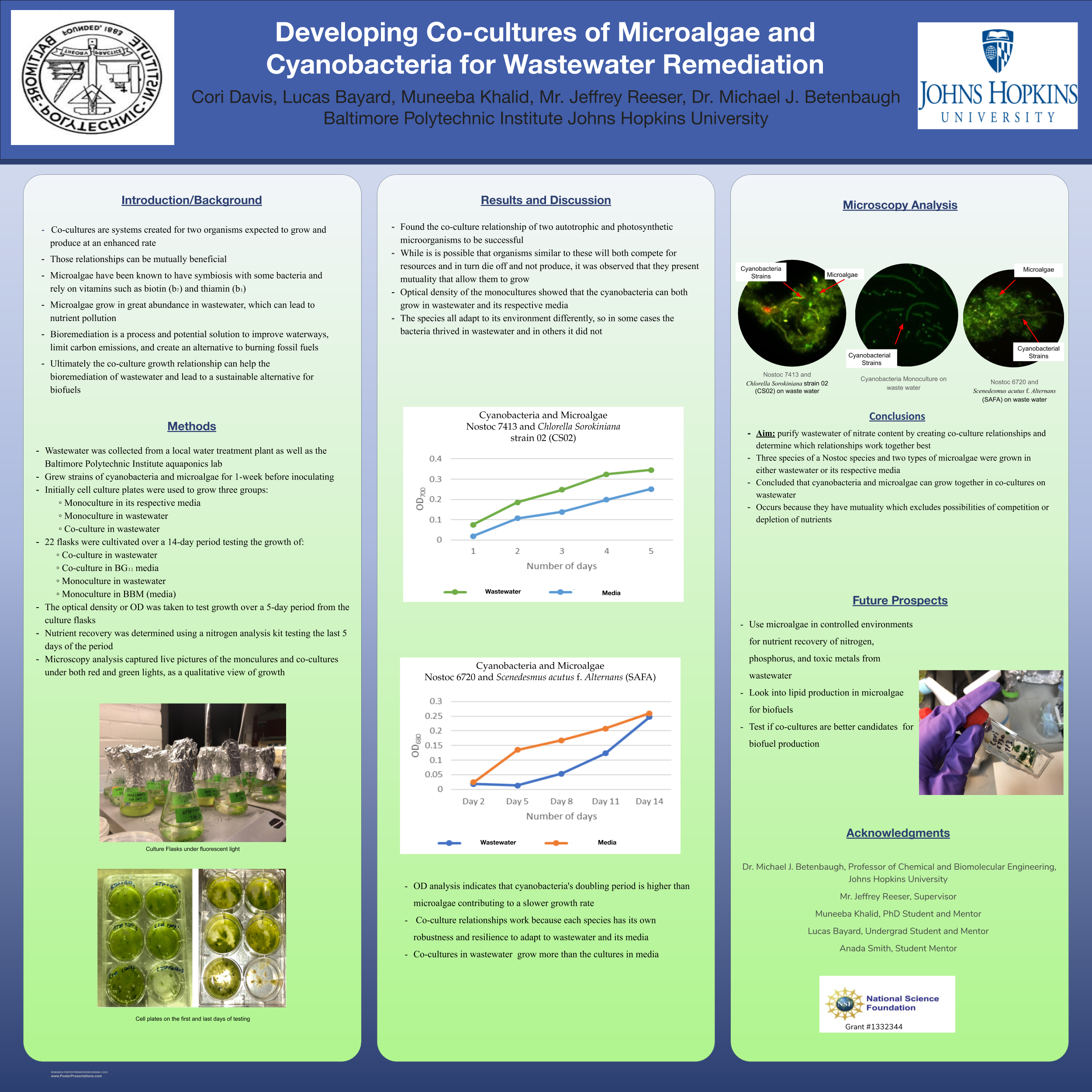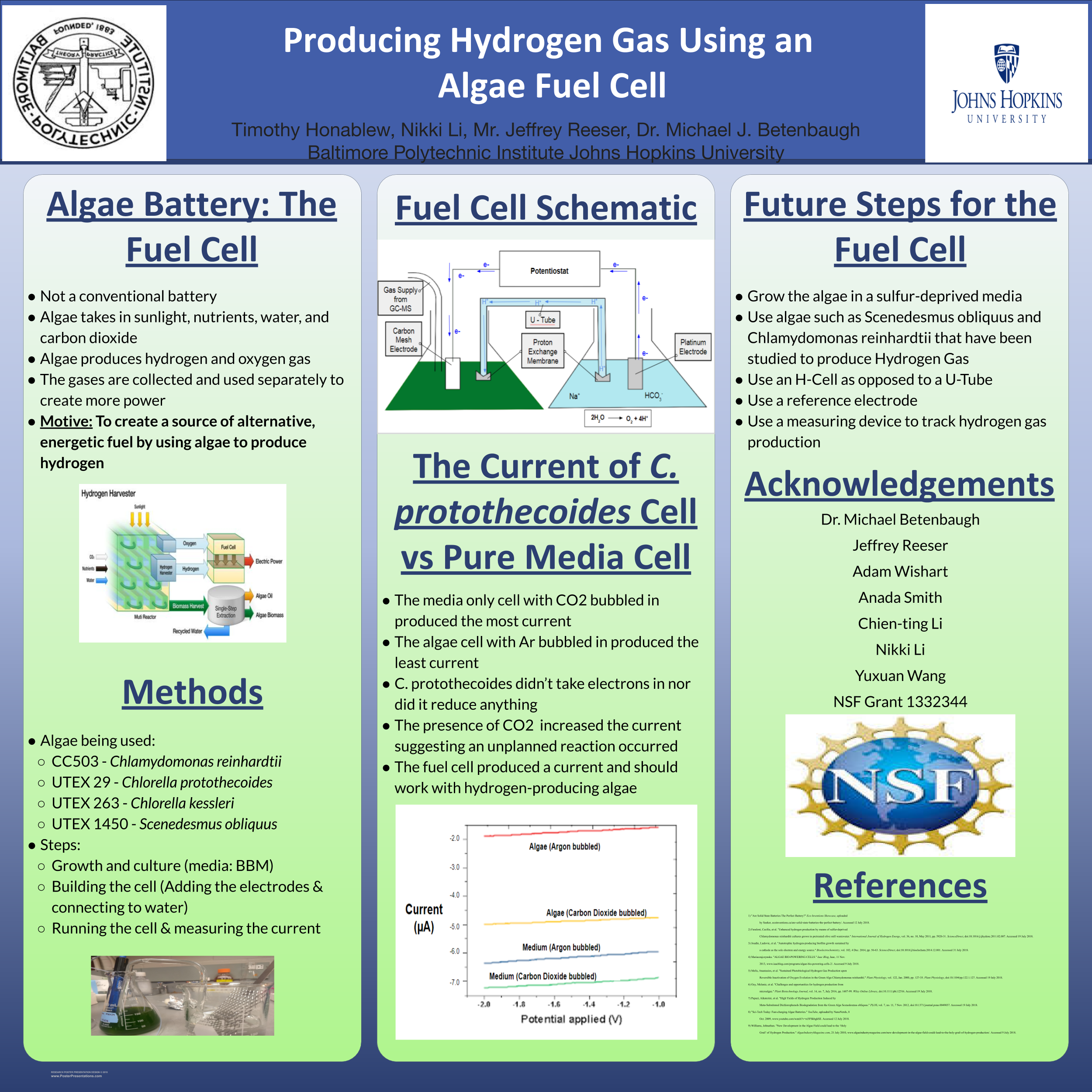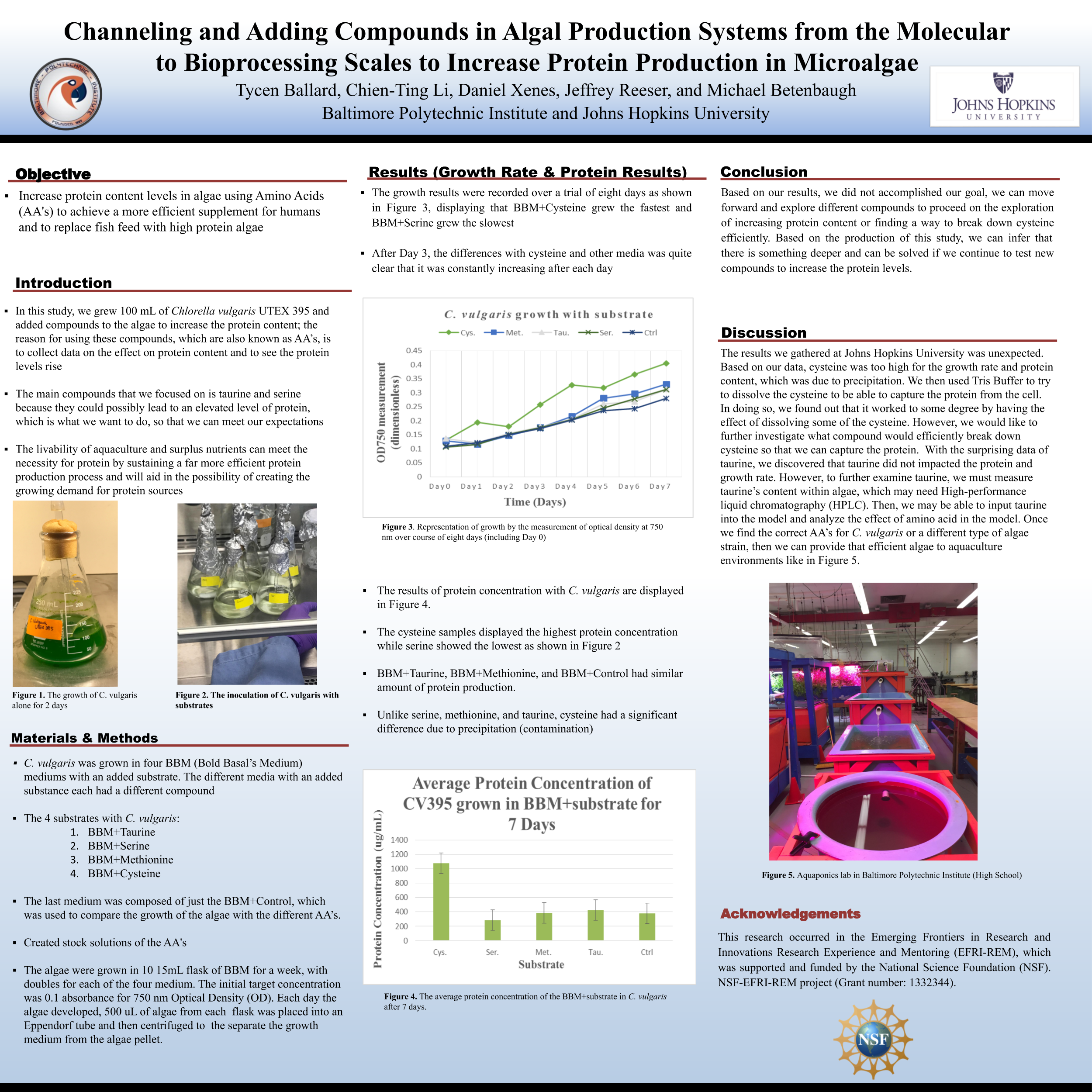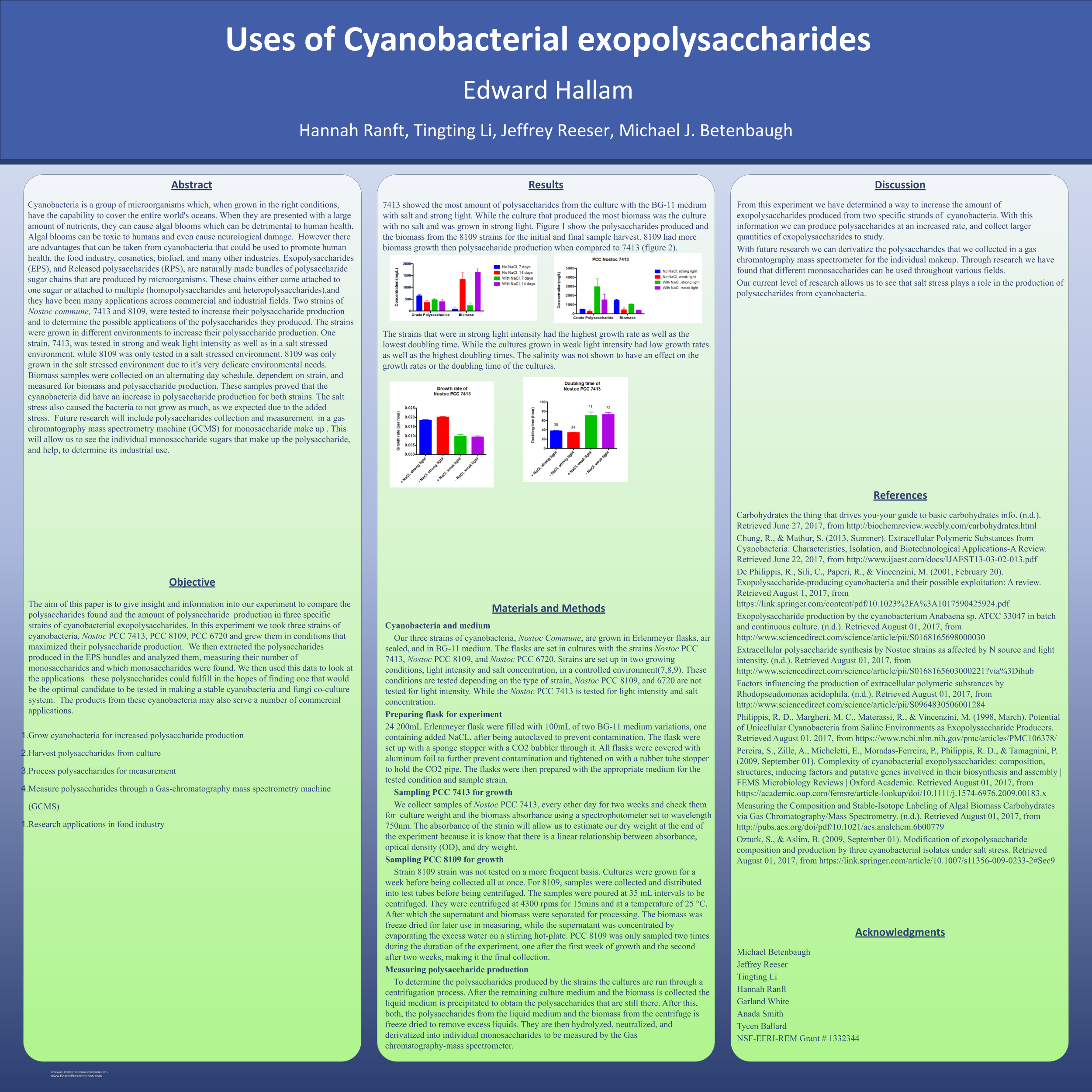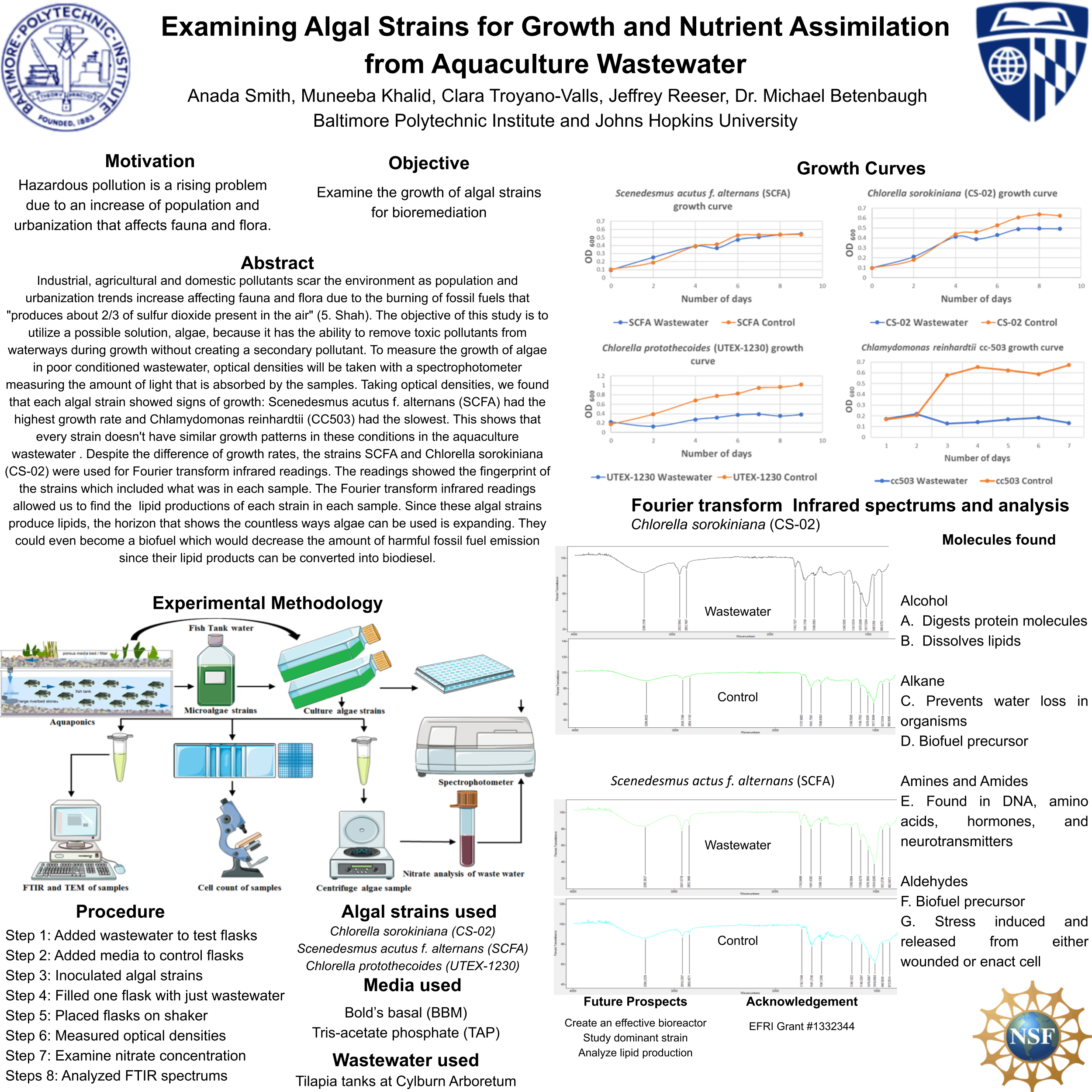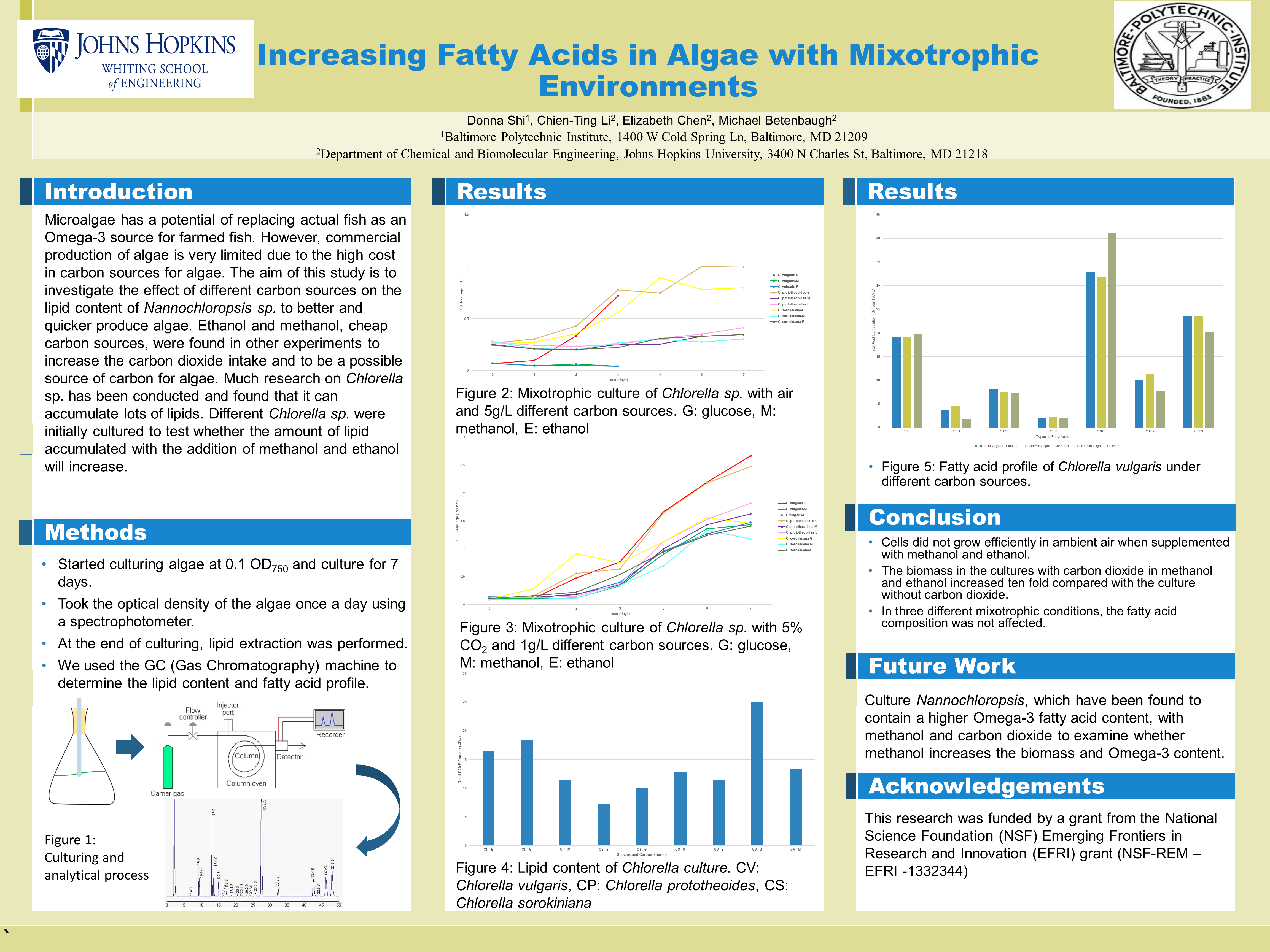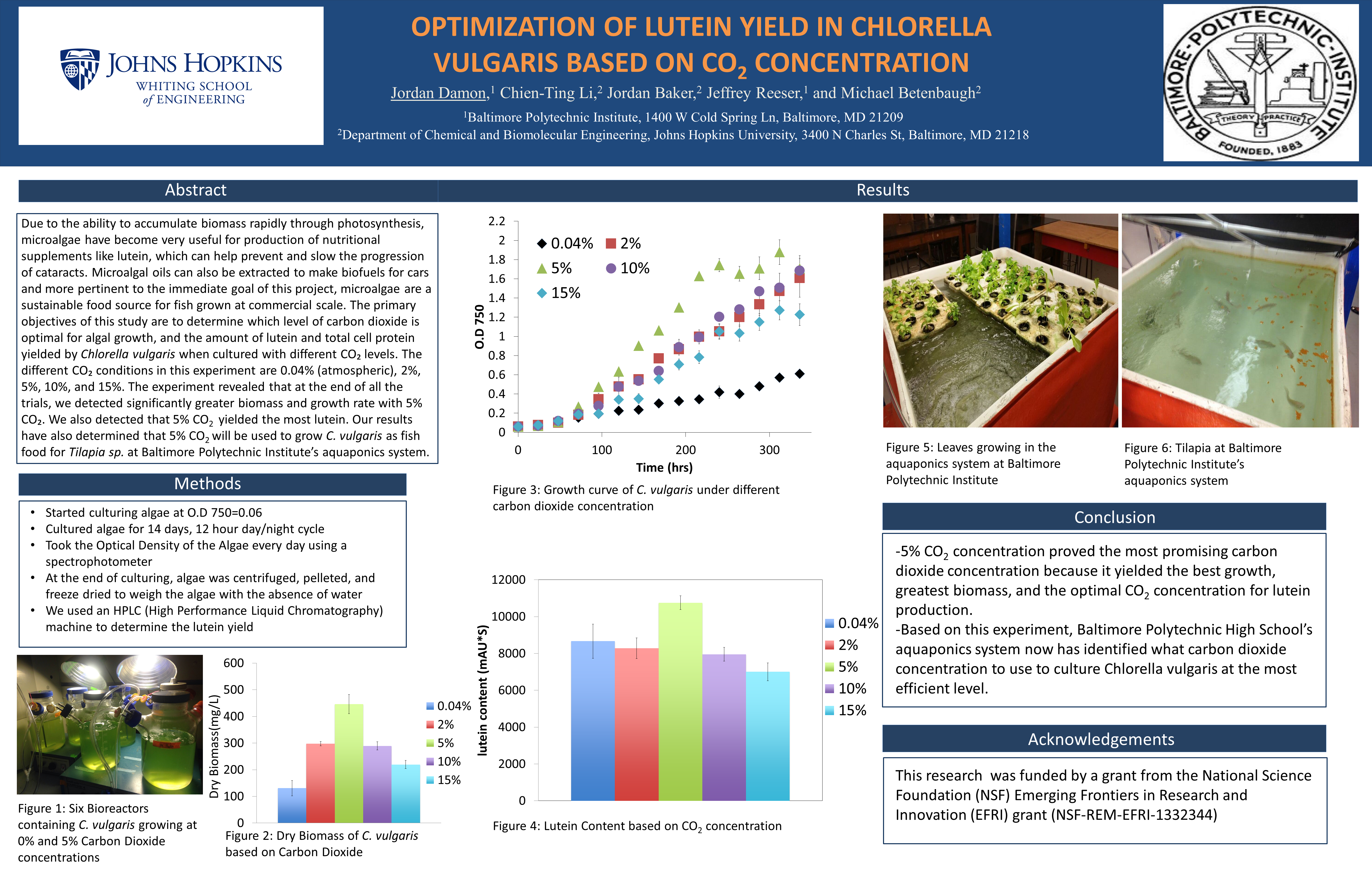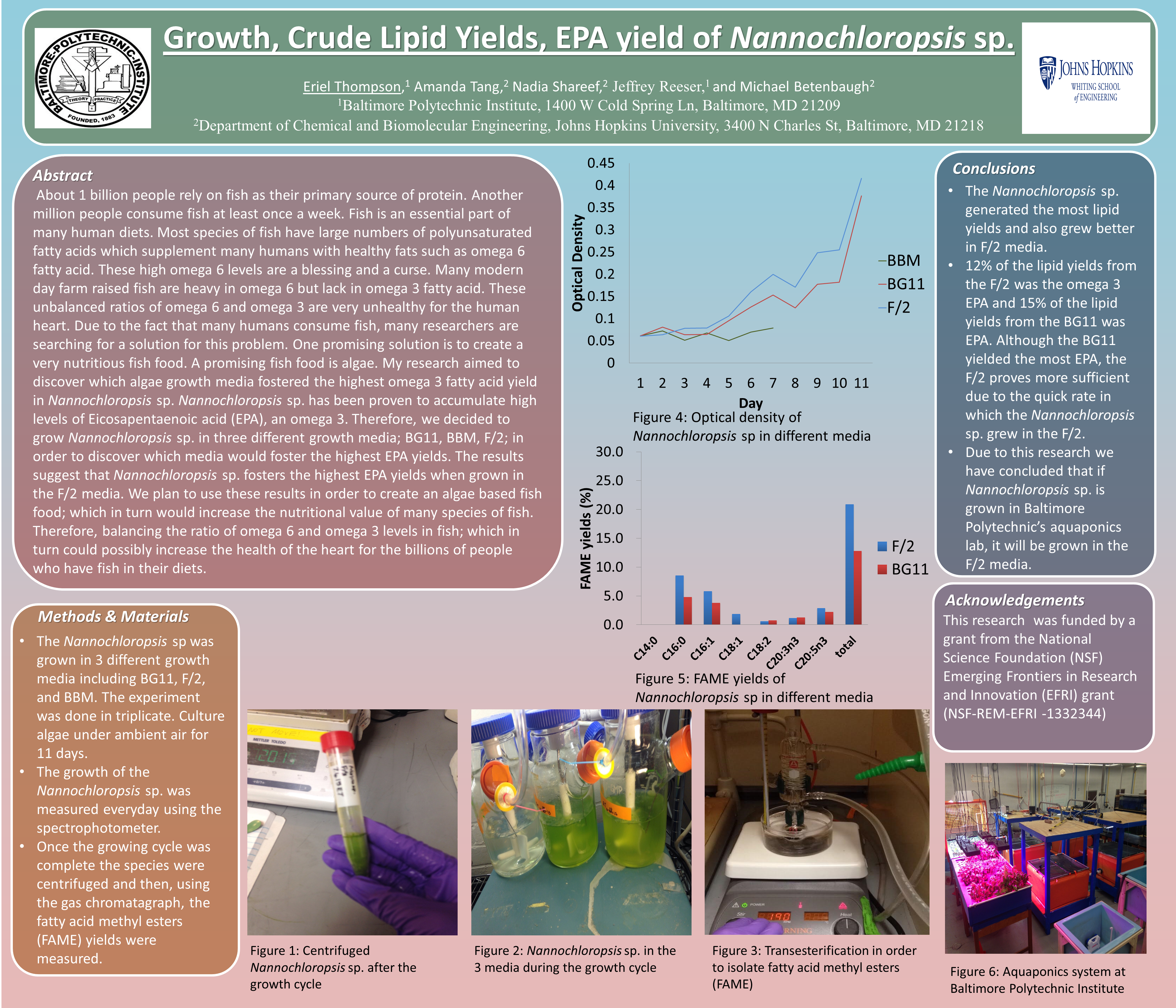Katelynn Johnson; Co-Authors: Maxwell Chen, Jack Jenkins, Jeffrey Reeser, and Michael Betenbaugh
As carbon dioxide (CO2) emissions increasingly rise and global warming is intensifying, the need for an alternative source of energy is in demand. Methylomicrobium alcaliphilum 20ZR is a methanotroph that has the ability to utilize methane and methanol as their main carbon source. By utilizing the catalytic conversion to convert CO2 into methanol and genetically modifying the bacteria to produce value-added chemicals, methanotrophs could pose to be useful in the future. As catalytic conversion utilizes potassium-based buffer as a main component in solution, we adapted M. alcaliphilum 20ZR to grow in potassium-rich media. To measure the overall growth of the bacteria, methanol consumption was measured using NMR and cell concentration was taken using the optical density. The bacteria successfully grew in a media that contained 80% KCl. These results suggest that this bacteria has the potential to grow in high concentrations of KCl and utilize methanol as its main carbon source.
